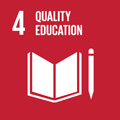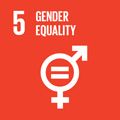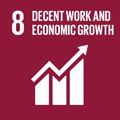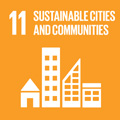- Docente: Roberto Carnero
- Credits: 6
- SSD: L-FIL-LET/11
- Language: Italian
- Teaching Mode: Traditional lectures
- Campus: Forli
- Corso: First cycle degree programme (L) in Intercultural and Linguistic Mediation (cod. 8059)
Learning outcomes
The student - knows the basic elements (concepts, terms, contents and objectives) of Italian institutions and culture, essential for the understanding of the numerous components of our cultural tradition (also recent) - is capable of identifying and understanding the cultural elements and institutional testimonies in literary, nonfiction, dramaturgical, cinematographic, musical works and in the field of contemporary Italian visual arts - is able to independently develop further knowledge and higher level skills and apply them in the analysis of other cultural and institutional phenomena typical of Italian civilization
Course contents
Images of contemporary Italy: history, economy, society, culture, literature, cinema, song.
Starting from the second half of the twentieth century, Italy has been affected by a radical process of transformation in the political, economic, social and cultural fields. This major modernization brought about extraordinary changes. The course aims to document and illustrate these changes, drawing on a series of different sources: literary, cinematographic, musical ones. In this way we will try to offer a "moving image" of Italy from the second half of the twentieth century to the present day.
Readings/Bibliography
Bibliography (reference text for the course):
Roberto Carnero - Giuseppe Iannaccone, Classe di letteratura, volume 3/B (Dalla Prima guerra mondiale a oggi), Giunti TVP Editori - Treccani (ISBN: 978-88-09-94984-3), only the following pages:
- 394-425 (Il secondo Novecento e gli anni Duemila);
- 426-432; 478-480 (Il Neorealismo / letteratura e cinema);
- 543 (Boom economico e sviluppo industriale. Il punto di vista degli scrittori sulla vita in fabbrica);
- 583-587 (Luciano Bianciardi);
- 588-593 (Leonardo Sciascia);
- 594-595 (Mafia e omertà);
- 642-643 (I giovani e la voglia di cambiare il mondo);
- 666-677; 698-717 (Pier Paolo Pasolini);
- 718-719 (Ricordare le vittime del terrorismo)
- 803-806 (Mario Luzi);
- 807-808 (L'attacco alla casta).
Lessons will focus, as well as on the literary passages on the pages indicated above, on some films and songs presented from time to time by the lecturer.
UPDATE AT THE END OF THE COURSE:
Students non attending classes are asked to watch privately the movies projected and analyzed in class. The list will be provided at the end of the course:
- Roma città aperta (by Roberto Rossellini)
- La vita agra (by Carlo Lizzani)
- I pugni in tasca (by Marco Bellocchio)
- La classe operaia va in paradiso (by Elio Petri)
- Vogliamo i colonnelli (by Mario Monicelli)
- Sivio Forever (by Roberto Faenza and Filippo Macelloni)
Further readings:
The topics developed in class can be explored in the following volumes. Every student is required to choose at least one book, to be read before the exam:
Andrea De Michele, Storia dell'Italia repubblicana (1948-2008), Garzanti;
Alberto Martinelli - Antonio M. Chiesi, La società italiana, Laterza;
Alberto Crespi, Storia d'Italia in 15 film, Laterza;
Giovanni De Luna, I film che hanno fatto gli italiani, Utet;
Gino Castaldo, Il romanzo della canzone italiana, Einaudi;
Giovanni De Luna, Le ragioni di un decennio. 1969-1979. Militanza, violenza, sconfitta, memoria, Feltrinelli;
Alberto Sebastiani, Le parole in pugno. Lingua, società e culture giovanili in Italia dal dopoguerra a oggi, Manni;
Anna Tonelli, Comizi d'amore. Politica e sentimenti dal '68 ai Papa boys, Carocci;
Luigi De Magistris, La Costituzione e noi, Loffredo.
Teaching methods
Lectures, reading and commenting on texts, use of multimedia products.
Assessment methods
The final exam will consist of an objective test (31 multiple choice questions to be answered in 30 minutes) and a written test (proposal of an open-ended outline - discussion of a topic or "essay" - to be carried out in 60 minutes). The overall grade will result from the arithmetic average of the two assessments.
The objectives of the exam will be related to the measurement of the learning outcomes expected by the students; the contents of the exam will cover the topics covered in the course.
There are no intermediate or partial exams.
Assessment method: overall grade out of thirty.
Evaluation grid
30-28: in-depth knowledge of the topics; language that is always exact and precise and of excellent argumentative clarity (the attribution of honors presupposes, in addition to the previous requirements, a marked and original personal reworking);
27-26: in-depth knowledge of the topics; language mostly exact and congruous and of good argumentative clarity;
25-24: fair knowledge of the topics; overall correct language even if characterized by some inaccuracies;
23-21: sufficient knowledge of the topics; language not always correct; presence of excessive simplifications of concepts;
20-18: overall sufficient knowledge, even if sometimes incomplete, of the topics; incorrect language, characterized by generalizations, inconsistencies and trivializations of concepts;
exam not passed: serious gaps in the preparation that testify an overall insufficient knowledge of the topics and / or incorrect and inadequate critical language with misunderstandings of concepts.
Office hours
See the website of Roberto Carnero
SDGs




This teaching activity contributes to the achievement of the Sustainable Development Goals of the UN 2030 Agenda.
